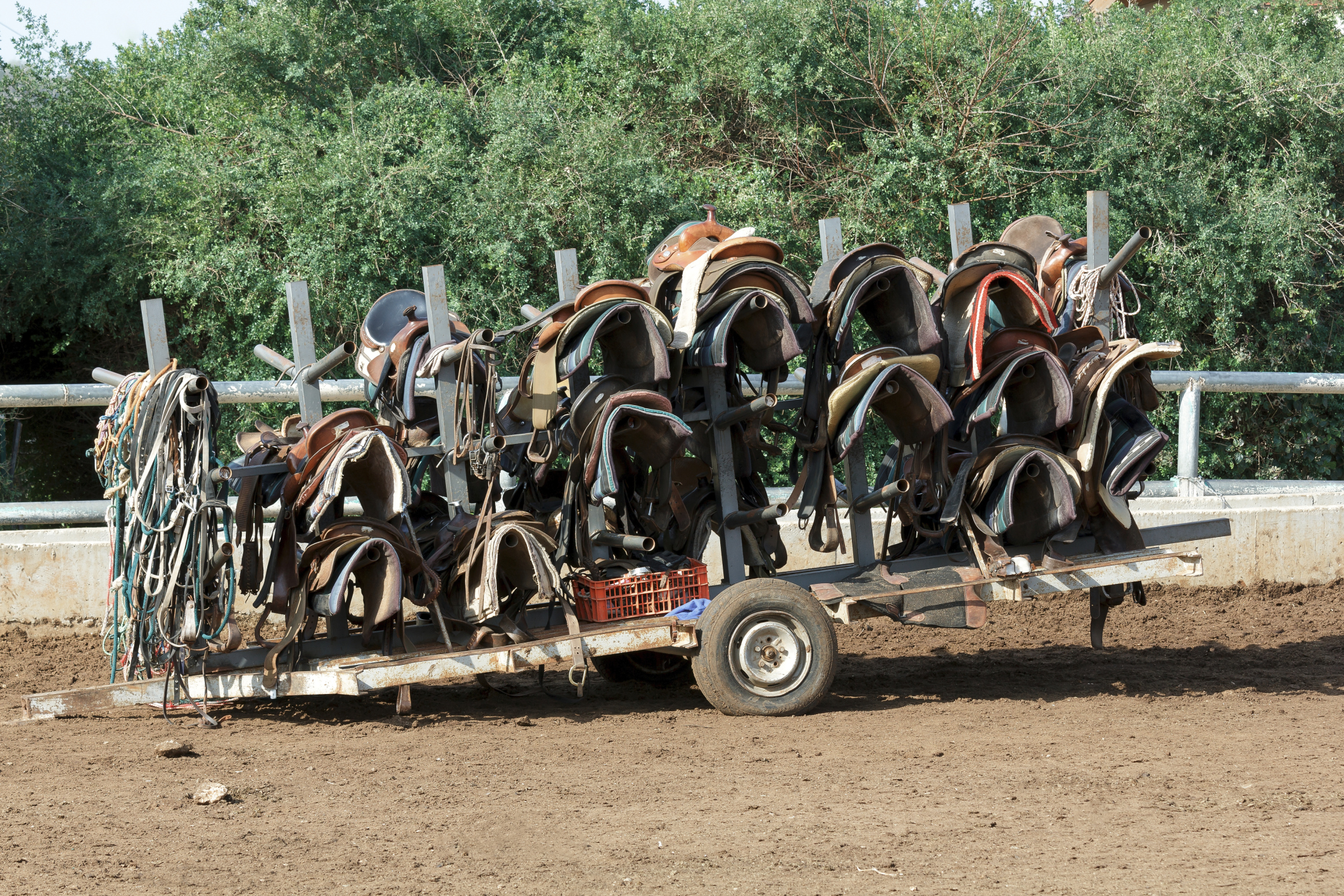
Riders often take their equipment for granted—routinely saddling and bridling horses and assuming everything is sound and safe. However, it pays to periodically do more than a brief visual check to make sure the material (leather or synthetic) is in good condition with no wear spots that might eventually lead to structure failure.
Saddlemaker/leatherworker Jeff Minor of Salmon, Idaho, said the main thing to check on a saddle (English or Western) would be the girth or cinch.
“This is where a lot of the stress/wear occurs, and this is what could let you down if something comes apart or breaks, because then you are detached from the horse,” said Minor. “The latigo on a Western saddle, and girth straps on an English saddle, should be checked for excessive wear, thinness, dryness, cracks in the leather, etc. Weakest places will be wear areas at buckles or wherever the leather bends/folds over a connecting part, such as where it goes over the rigging ring of the saddle, because it’s constantly in contact with that ring.
“The rest of the latigo is moved every time you put the saddle on and off, unless you are riding the same horse all the time—and then the pressure will be in the same place each time you ride,” he said. “The place it’s rarely checked is where the latigo folds over the rigging, because it’s underneath the stirrup leather and seat jockey. As you are cinching up, you may not bother to look because it’s underneath.”
The second thing to check would be stirrup leathers—checking for cracks, wear or thin places. “If the leather is not very good, stretching can cause problems,” Minor said. “English stirrup leathers are narrower and often thinner. Check the connections up under the seat. On a Western saddle, you need to pull the stirrup leathers through to where you can see where they go over the bars of the saddle. They generally don’t wear as much up there, however, as down where the leather is exposed.
“Also check the Blevins buckles to see if the holes are being pulled into oblong shape, and check the thickness/thinning of the leather right under the seat jockey,” Minor recommended. “That’s where the attachment of a stirrup leather and fender are located and there are usually some rivets. Rivet heads may become worn, and if they wear completely off, the fender will detach from the stirrup leather at the top.”
The rest of the saddle (strings, buckles and rings for breast collar or other attachments, wool or synthetic padding under the saddle, etc.) also should occasionally be checked. Padding or sheepskin might need to be replaced if it gets too worn or matted down, because then it won’t fit the horse properly.
“If sheepskin lining becomes too worn, creating bald spots, this reduces the padding and changes the fit,” he said. “If burrs or stickers get stuck in the wool, it can create a knot and pressure point. You need to check the underneath side of the saddle.”
He recommended twice-yearly cleaning and a thorough check of the entire saddle. This will catch small problems before they become big trouble.
“Halfway through the riding season, and at the end of the season, take time to take the saddle apart to check rigging, stirrup leathers, padding, etc.,” he said. “Then you can resolve any problems as well as clean and oil the leather.”
Many saddles have wear leathers. “If those wear out, they should be replaced before pressure/chaffing wears into the good leather beneath them,” Minor said. “Wear leathers are there for a reason, to keep the crucial components from wearing too much. If you ignore the wear leathers, there can be damage to vital underparts.”
For bridles, check buckles, and where the bit connects to the headstall. Any place there might be wear spots, or the leather is in contact with a bit ring, should be checked.
“Anything metal tends to wear the leather, and depending on the type of metal, it can be corrosive,” Minor added. “Metal can dry out the leather, just from the reaction of metal to leather. Some of the tanning products can be corrosive for metal, and in turn the metal erodes the leather and causes it to dry out.
“You can apply oil or leather conditioner to protect those areas to reduce this type of reaction,” he recommended.”It’s hard to correct it after the fact; it’s better to keep this damage from happening in the first place by keeping leather in good condition.”
Sweat damages leather. “It’s probably the hardest thing on leather, along with rain (getting wet/dry, wet/dry),” Minor said. “The salt in sweat is very corrosive; leather needs to be cleaned after it comes in contact with the horse’s sweat, then apply a good oil or leather conditioner to the leather.
“This will keep your tack strong and in useable condition for a long time, especially if it was good leather to begin with,” said Minor. “If you want a saddle or bridle to hold up for many years, it pays to invest in good-quality materials.”


